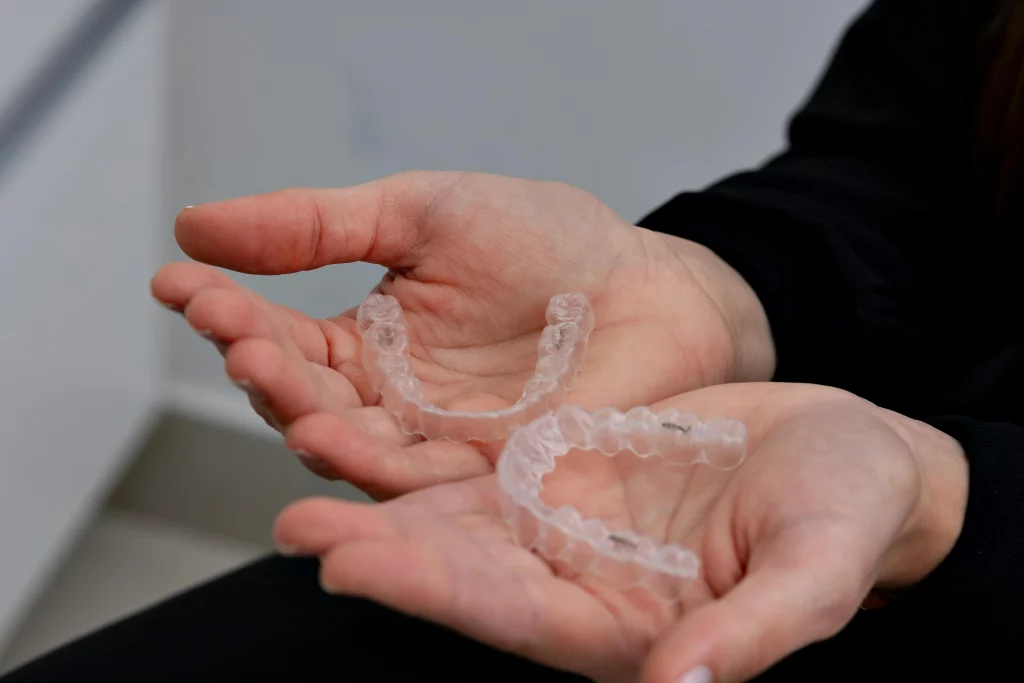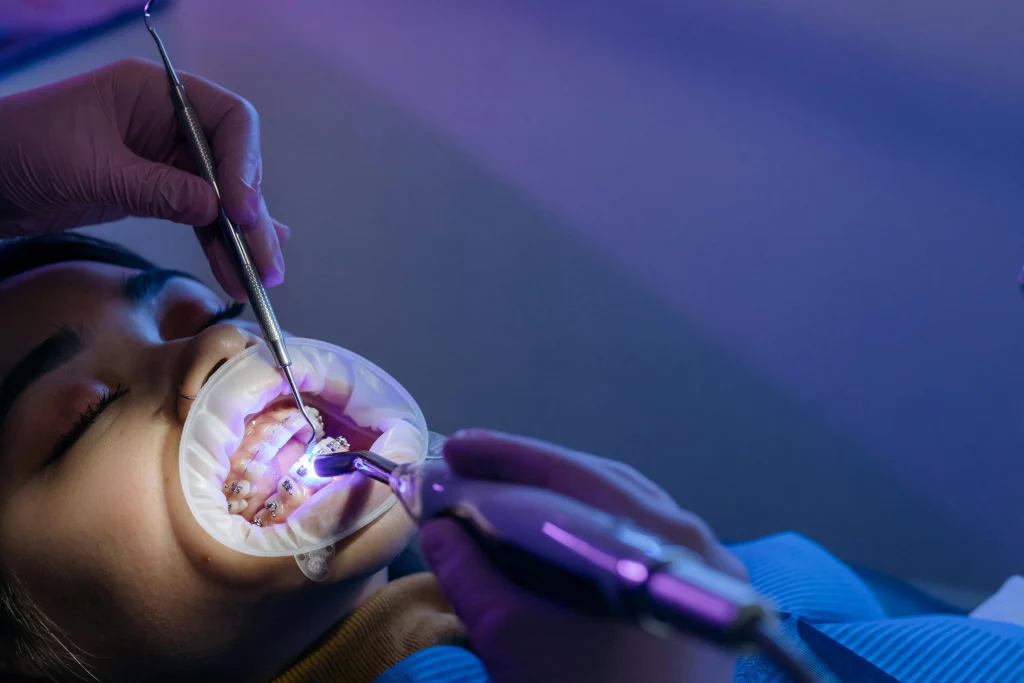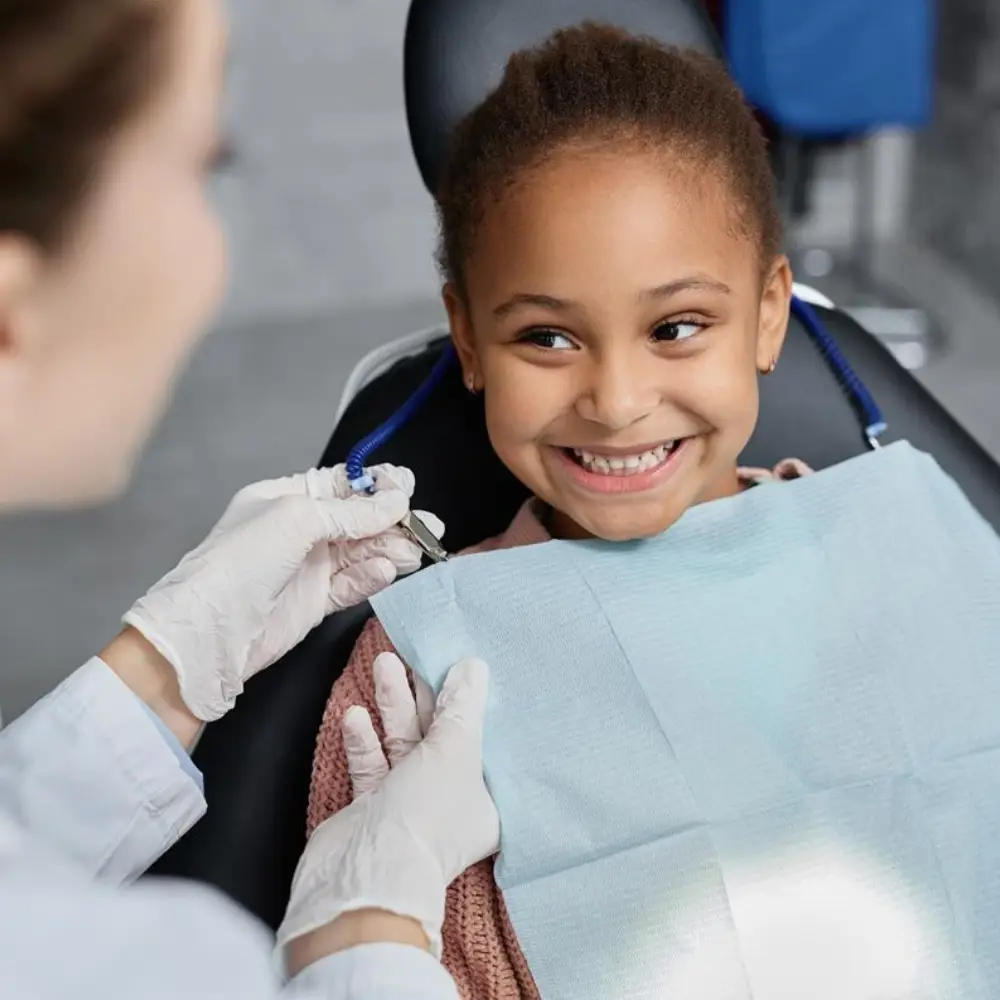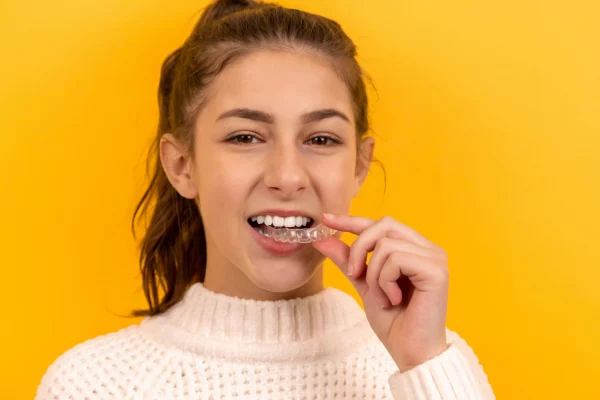Invisalign has transformed how individuals attain straighter teeth without going through the inconvenience of conventional braces. However, to improve the efficacy of this clear aligner system, it may be suggested to use Invisalign attachments. These little, tooth-colored pieces will be attached to your teeth to provide your aligners with greater traction and control during treatment. They are not very noticeable, but they contribute greatly to the positioning of your teeth in the correct place, making you achieve the perfect and confident smile in a shorter period of time.
In this article, we will discuss what the Invisalign attachments are, how they assist in the treatment, and why your orthodontist may recommend them to give you the best outcomes.
What Are Invisalign Attachments?

Invisalign therapy usually involves attachments—small, tooth-colored bumps that allow the aligners to use the proper amount of pressure on each tooth. They are small features but significant that are custom-made and directly bonded to certain teeth to facilitate movement.
Although the overall force is given by the aligners themselves, attachments enable a better grip and precision. Consider them like handles to which the aligner can guide your teeth to do something that you would otherwise not be able to do, particularly in more complicated cases.
The attachments have allowed Invisalign to gain the capacity to treat cases that were traditionally left to conventional braces. To a majority of patients, they are a silent yet strong supporter to achieving a straight smile.
How Attachments Help Guide Tooth Movement
The attachments enhance the bond between the aligner and your teeth to facilitate certain movements like rotation, extrusion (pulling the tooth out) or intrusion (moving the tooth up). In their absence, the aligners might not have enough hold on the teeth to cause the necessary changes, particularly in the instances where the shape of the tooth does not permit sufficient leverage to do so.
These bumps are accurately molded according to the digital scan of your mouth and the positioning of the bumps is done accurately. Your orthodontist will make sure they are appropriate to your treatment plans and used where they will play the most role.
When Your Orthodontist Might Recommend Them
Attachments are usually prescribed in case the treatment of the patient includes more complicated movements or when some teeth require additional pressure to go into alignment. Attachments are usually needed in case your Invisalign treatment involves rotating cylindrical teeth such as canines and premolars.
The use of your provider will be determined by the review of your 3D treatment plan. Although every patient may not use attachments as they undergo Invisalign treatment, the majority of them will apply at least some of them.
Do All Invisalign Patients Need Attachments?
Not all patients who are having Invisalign will require attachments; however, a majority of them will at some point. This is based on the number and type of your tooth movements and the simplicity of your case. They may not be necessary in minor crowding or spacing, but in more extensive corrections they are very often necessary.
Your provider will suggest them because they help to increase predictability and effectiveness of your treatment. They are made to fit perfectly to your aligners and although they are small they play an important role to achieve your perfect outcome.
Invisalign Attachments vs. Brackets

Invisalign attachments and traditional brackets both help move teeth, but in very different ways. While brackets are part of metal braces, Invisalign attachments work with clear aligners to gently guide your teeth. Let’s take a quick look at how these two options compare in function, comfort, and appearance.
Are They Noticeable? Comparing Appearance
Invisalign attachments are hardly noticeable compared to the metal brackets. They are created out of a composite resin that is tooth-colored and matches your enamel. Most people cannot notice your aligners even when they are not in use unless they are very keen. Attachments are a discrete method of obtaining similar (and in some cases, even better) results to braces, which can take over your smile with metal.
Comfort, Cleaning, and Daily Use Differences
Since the attachments are glued on the surface of the teeth, you can sense them with your tongue, although they are mostly smooth and do not bother your lips or cheeks as braces do. You will still be able to brush and floss as usual, but will have to be extra diligent to brush around each attachment to make sure that plaque does not accumulate there. Attachments are attached without any wires unlike brackets and are passive unless used with aligners. They do not move and pull on your teeth by themselves.
Do They Affect Treatment Time?
In certain instances, attachments may even reduce the duration of treatment since they enhance the effectiveness of the aligner. They enable more focused pressure, thus they guarantee the movements to be made as intended and minimize the likelihood of unjustified delays or corrections. But your cooperation is important. Even the proper use of aligners and their good care remain important determinants of the duration of your Invisalign experience.
Caring for Invisalign with Attachments
Invisalign with attachments needs some additional attention to ensure that you are on course with your treatment. Since attachments assist in controlling your aligners, you should take care of them by ensuring that they are kept clean. Clean your aligners every day to remove stains or bad odor and brush and floss regularly to avoid accumulation of plaque. To save your aligners and attachment, it is better to avoid eating or drinking anything except water when wearing them.
How to Clean Around Attachments Properly
Cleaning of attachments is vital to oral health and the duration of the composite material. Remove each bump by brushing gently, with a soft-bristled toothbrush and fluoride toothpaste. Brush normally, but brush a little more carefully around the teeth that have attachments to avoid food lodging. It is also possible to maintain the area by using an interdental brush or a water flosser without destroying the attachments.
What Not to Eat or Drink with Attachments In
Although you need to take out aligners when you eat or drink anything except water, the attachments remain on your teeth during treatment. The foods that may be sticky, hard, or highly pigmented may be problematic. Do not chew ice, nuts or hard candy that can chip or dislodge them. Highly-pigmented foods, such as curry or blackberries, are also able to stain attachments with time, particularly when you are not brushing shortly after.
Replacing Lost or Damaged Attachments
Sometimes an attachment can detach—particularly when you eat hard food, or grind your teeth. In case it occurs, call your provider immediately. A lost attachment may disrupt your treatment plan and therefore immediate replacement is necessary. The orthodontist will also re-bond the attachment in a fast and painless way, so your aligners will work successfully all through your treatment period.
Are Attachments Covered by Invisalign Cost Estimates?
Yes, attachments are normally part and parcel of the total cost of your Invisalign treatment. Most orthodontists include them in your initial estimate because they are a regular component of most treatment plans. Nevertheless, it is always prudent to check with your provider in order to prevent any surprise charges. When getting a quote on Invisalign, be sure to ask to have it broken down to include what is covered to have a plan on how to budget accordingly.
What to Ask Your Provider Before You Start
When you talk to your Invisalign plan, always inquire whether you are going to have attachments or not, and whether they are included in the quoted price. Providers do not always segregate fees in the same manner, and it is better to get it straightened out beforehand. Ask them how many attachments they would expect to use and whether they will have to pay extra to have more appointments to apply or replace them.
Hidden Fees or Included in the Base Price?
Attachments are part of the basic rate in the majority of thorough Invisalign plans. Nevertheless, in certain packages that are restricted or low-cost, you may encounter extra fees in case the treatment turns out to be more sophisticated and attachments are needed afterward. Look through your contract and negotiate with your orthodontist regarding possible add-ons prior to making the commitment. Open pricing does not have any hidden surprises.
Why Attachment Planning Matters in Total Cost
The attachments and their quantity may also affect the overall trays you will have to use and the duration of treatment. The more attachments, the more accuracy, possibly less refinements, and improved final result, which might save you money and time in a long term perspective. Proper planning that includes attachments can make the Invisalign experience easier and can enhance the worth of your total investment.
Frequently Asked Questions (FAQs)
1. What are Invisalign attachments made of?
The Invisalign attachments are constructed out of a composite resin made up of a tooth-colored material that dentists usually use to make fillings. This will make them blend in with your teeth and will also give your aligners a good hold. These are tiny, smooth bumps cemented on your enamel without destroying it. All the attachments are individually designed, and fitted according to your 3D treatment plan to facilitate the movement of teeth. They also are smooth in comfort and appearance and are practically invisible. Although they are not very obvious, they are very effective in keeping your Invisalign treatment on course.
2. Do attachments hurt when placed or removed?
Invisalign attachments are easy and painless to obtain. It does not require numbing and your provider will follow a pre-made template to make sure that every attachment is in place. The application may cause a little bit of pressure, although it is usually very light. The whole procedure is painless and easy. It is just as simple when it comes time to remove it, attachments are simply polished away not damaging your enamel.
3. Will I feel attachments while wearing aligners?
When you are not wearing your aligners, you may feel Invisalign attachments with your tongue, but they are barely noticeable when the trays are in the mouth. The majority of the population adapts in a couple of days and soon forgets that they are there. The attachments are not going to interfere with speech or your daily routine and will be simply added to your treatment.
4. Can attachments stain from food or drink?
Yep, Invisalign attachments are stainable, particularly when you are habitually consuming dark spirits such as coffee, tea, or red wine, or pigmented foods. Since the attachments are composed of composite resin, they are porous and have the ability to stain with time without maintenance. In order to reduce staining, you should brush your teeth after meals and before inserting your aligners back. It can also help by using a straw to stain drinks and rinse your mouth with water. Good oral hygiene will help you maintain your attachments as inconspicuous as possible during your treatment.
5. Are attachments used with every aligner tray?
Attachments remain on your teeth throughout most of your Invisalign treatment although not all aligner trays will actively engage them. Your orthodontist can add, fix, or eliminate some of these attachments as your teeth shift and your treatment progresses. These adjustments are incorporated into a tailor-made program that is meant to deliver the best outcomes. Although attachments are minute, they are strong in influencing complicated tooth movements.
Thinking about Invisalign but unsure about attachments? You’re not alone, many patients have questions before they begin. At Graham Park Dental, our experienced team offers personalized care, clear guidance, and a treatment plan tailored just for you.
Book a consultation today to learn how Invisalign attachments can transform your smile with precision and comfort. Your confident, radiant smile starts with the right plan, and we’re here to help every step of the way.


